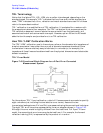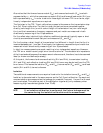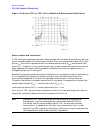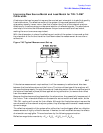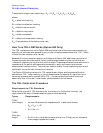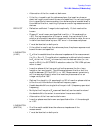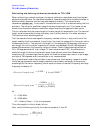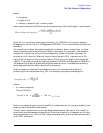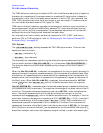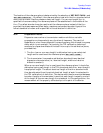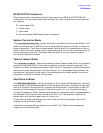
7-75
Operating Concepts
TRL*/LRM* Calibration (ES Models Only)
where:
f = frequency
l = length of line
v = velocity = speed of light × velocity factor
which can be reduced to the following using frequencies in MHz and length in centimeters:
So for an air line (velocity factor approximately 1) at 1000 MHz, the insertion phase is
60 degrees for a 5 cm line; it is 120 degrees at 2000 MHz. This line would be a suitable line
standard.
For microstrip and other fabricated standards, the velocity factor is significant. In those
cases, the phase calculation must be divided by that factor. For example, if the dielectric
constant for a substrate is 10, and the corresponding "effective" dielectric constant for
microstrip is 6.5, then the "effective" velocity factor equals 0.39 (1 ÷ square root of 6.5).
Using the first equation with a velocity factor of 0.39, the initial length to test would be
1.95 cm. This length provides an insertion phase at 1000 MHz of 60 degrees; at 2000 MHz,
120 degrees (the insertion phase should be the same as the air line because the velocity
factor was accounted for when using the first equation).
Another reason for showing this example is to point out the potential problem in
calibrating at low frequencies using TRL. For example, one-quarter wavelength is
where:
• fc = center frequency
Thus, at 50 MHz,
Such a line standard would not only be difficult to fabricate, but its long term stability and
usability would be questionable as well.
Thus at lower frequencies or very broad band measurements, fabrication of a "match" or
termination may be deemed more practical. Since a termination is, in essence, an infinitely
long transmission line, it fits the TRL model mathematically, and is sometimes referred to
as a "TRM" calibration.
Phase degrees()approx
0.012 fMHz()× lcm()×
VF
-----------------------------------------------------------=
Length cm()
7500 VF×
fc
--------------------------=
Length cm()
7500
50 MHz()
-----------------------
150 cm
or 1.5 m
==




